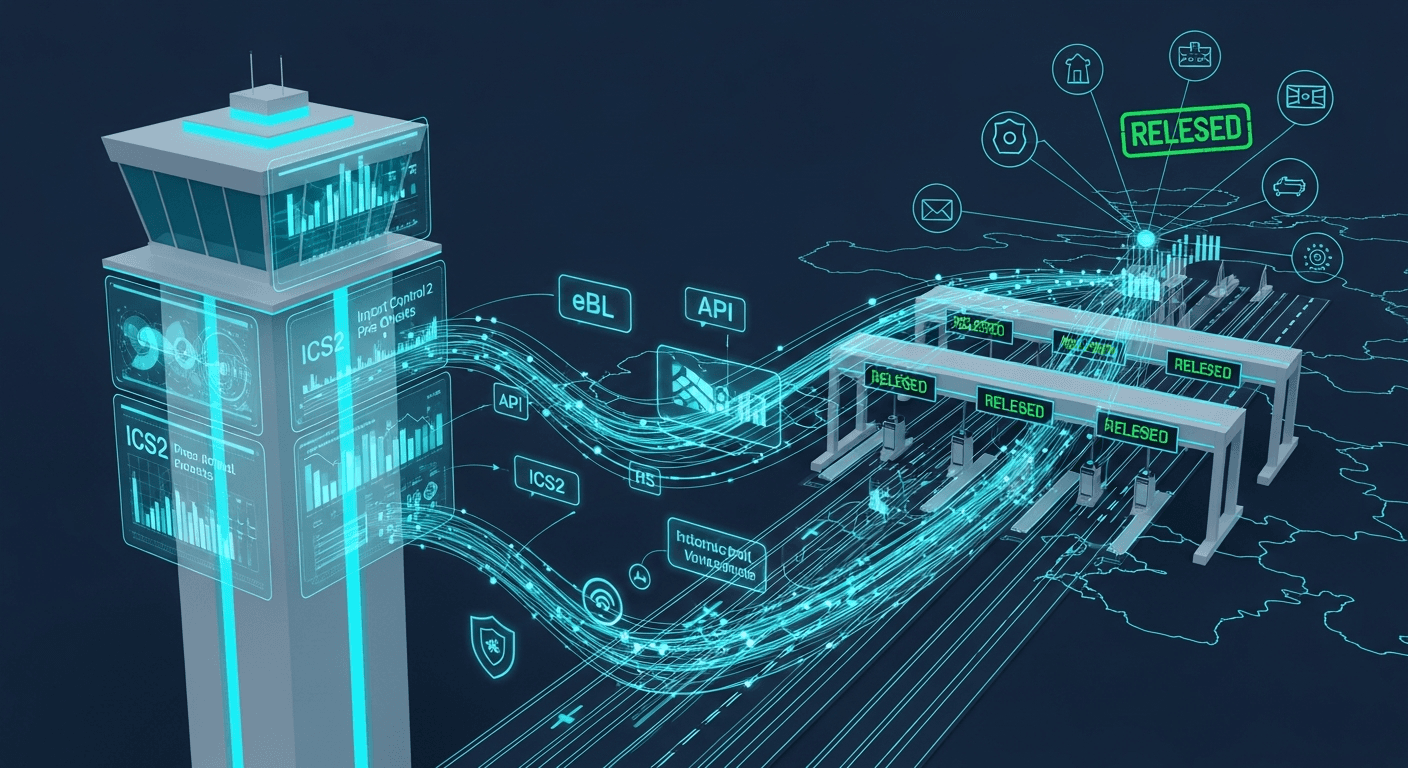Tuesday, 4 Nov 2025
|Stakeholder Alignment for AI Investments in Logistics 2025: ROI and Risk Frameworks that Win Approval

AI investments win rapid board approval when framed around quantified value, controlled risk, and fast iteration pathways that match enterprise governance expectations in logistics-heavy operations. The most effective narrative pairs 20–30% performance gains with robust guardrails—translating AI from experimental spend into a capital-efficient engine for margin expansion and resilience in 2025.
Introduction
The AI-in-logistics market is accelerating toward the tens of billions, underpinned by a high double-digit CAGR and growing pressure to offset over $1.5 trillion in annual disruption costs across supply chains. Boards and investors have little patience for vague pilots; they expect crisp payback math, controllable risk, and a compliance-ready roadmap that scales from a pilot to network-wide gains. This guide delivers communication frameworks, ROI models, and risk plans—grounded in lessons from Amazon, Walmart, DHL, Maersk, and UPS—to help executives secure buy-in and funding for AI initiatives with confidence.
Stakeholder alignment goals
Boards prioritize fiduciary duty: return on capital, defensible risk posture, and governance clarity across model, data, and vendor choices. Investors expect measurable impacts in cost-to-serve, working capital, and service quality—ideally compounding returns over three years without ballooning integration spend. Executives that show an “outcomes-first” roadmap—sequenced use cases, capped downside, audited data lineage—consistently clear investment committees faster and at larger scales.
Stakeholder concerns decoded
What boards and investors really ask
- Where are the returns and how fast are they realized (payback under 18–24 months) amid a volatile operating environment?
- How will integration risk, data quality, and security be managed to enterprise standards without runaway costs?
- What governance prevents model drift, bias, or regulatory non-compliance at scale across regions and partners?
McKinsey highlights budget overruns and integration complexity as common failure modes, reinforcing the need to bound scope and prove value in tightly controlled pilots before scaling. Gartner underscores gaps between mid-market and enterprise AI deployment maturity, pointing to the value of modular architectures and staged adoption.
Alignment checklist
- Baseline metrics integrity confirmed across cost, service, inventory, and emissions prior to modeling.
- Data readiness plan addressing silos, quality thresholds, and stewardship models tied to business owners.
- Clear decision rights mapping for AI recommendations versus human overrides in operations.
- Scaling gates defined: model performance, financial thresholds, governance sign-off, and security attestations.
Communication frameworks that win approval
The 5-slide executive pitch
- Context: Disruption magnitude and margin compression; market adoption trends and competitive pressure.
- Thesis: Three-pronged value—cost, service, capital—delivered through sequenced AI use cases aligned to network constraints.
- Proof: Benchmarks and case studies with quantified ranges, variance bands, and sensitivity to adoption/quality.
- Risk plan: Integration, security, ethics, and continuity controls mapped to standards and regulators.
- Decision: Pilot scope, KPIs, budget, timeline, and scale-up criteria with explicit go/no-go thresholds.
This format keeps focus on outcomes and controllability, mirroring successful board narratives seen in large-scale logistics deployments.
Story structure
Use a “today-to-tomorrow” arc with three beats: baseline pain, targeted AI intervention, and measured outcomes tied to financial statements. Elevate clarity with one-page visuals: a value tree breaking cost-to-serve drivers; a heat map showing risk controls by category; and a maturity ladder showing scale milestones.
ROI narratives boards trust
The value stack
- Transportation: Dynamic routing and load planning yield 8–15% cost reductions via fewer miles and higher fill rates.
- Inventory: Forecasting and multi-echelon optimization reduce stock by 15–30% while lifting service levels.
- Warehouse: Task orchestration and robotics lift throughput 20–40% and improve labor productivity.
- Customer: Promise-date accuracy boosts NPS and retention, reducing churn and redelivery costs.
A crisp ROI template should show baseline spend, addressable spend, expected gains, phasing, and payback with low/expected/high cases. Example: If transportation spend is $100M$100M, 15% savings equal $15M$15M annually; a $6M$6M program with 6-month pilot and 12-month scale yields ~1.7x year-one and 2.5–3.5x by year two depending on adoption and fuel variance.
Proof from leaders
- Amazon: Large-scale robotics and predictive systems cut fulfillment costs and boosted throughput, proving multi-year ROI alongside safety improvements.
- Walmart: Store and DC AI improved availability and inventory turns at national scale with measurable OpEx reductions.
- DHL: AI-driven forecasting and rerouting improved accuracy and cycle times across global lanes, translating to fuel and service gains.
- UPS: ORION route optimization saved fuel, miles, and emissions at fleet scale—an enduring proof point for AI scheduling economics.
- Maersk: Control-tower analytics reduced demurrage and dwell, demonstrating clear cash impact from predictive logistics.
These programs succeeded by sequencing use cases, codifying governance, and demonstrating value early with transparent KPIs.
Risk mitigation plans boards require
Integration, data, and security
- Integration: API-first staging, sandbox pilots, and adapters for legacy WMS/TMS/ERP reduce rework risk and cap integration spend.
- Data quality: Business-owned stewardship with SLAs on freshness and accuracy stabilizes model performance.
- Security: Encryption, secrets management, access controls, and model isolation align with enterprise zero-trust and audit needs.
Gartner highlights the importance of privacy-preserving techniques and robust vendor risk assessments, especially when scaling across partners. Board comfort rises when mitigations are quantified (e.g., breach reduction estimates, RTO/RPO targets) and tied to continuous monitoring.
Governance and continuity
- Model governance: Versioning, drift detection, explainability artifacts, and bias audits gated through a cross-functional committee.
- Operational continuity: Human-in-the-loop escalation, fail-open procedures, and rollback playbooks for peak seasons.
- Compliance: Mapping to GDPR and sectoral rules with DPIAs and data-minimization strategies for global operations.
Define risk KPIs: uptime targets ≥99.5%≥99.5%, anomaly detection precision ≥95%≥95%, time-to-mitigate ≤60≤60 minutes, and audit closure within quarter.
Roadmap and orchestration
Sequencing by constraint
Start where constraints are binding: lane volatility, pick density, or forecast error pockets. Structure a 3-horizon roadmap: POC on a constrained node, phase-in across similar nodes, and network roll-out with policy and incentive updates. Tie each horizon to CFO-signed cash capture: opex deltas, working capital release, and capex avoidance with audit trails.
Multi-agent coordination
Use multi-agent patterns to coordinate forecasting, allocation, slotting, routing, and exception handling with shared policies and guardrails. Create a shared context layer to avoid local sub-optimizations and enable global objective alignment (service, cost, and inventory). This reduces manual firefighting and speeds decision cycles across network tiers.
Metrics that sustain credibility
- Financial: cost-to-serve, transport per mile, labor per unit, DIO/DOH, and cash conversion cycle.
- Operational: OTIF, dwell time, capacity utilization, and pick-to-ship cycle time.
- Risk: mean time to detect/resolve, compliance incident rates, and model drift frequency.
- Adoption: user activation, policy adherence, and override analysis by role and site.
Dashboards that blend financial and operational KPIs build investor confidence and expedite subsequent funding rounds. Iterate quarterly with post-mortems, model refreshes, and policy refinements to maintain ROI slope and trust.
Case studies decoded for pitches
UPS ORION: fleet-scale ROI
ORION delivered sustained fuel, mile, and emissions savings through algorithmic routing integrated with driver workflows and enterprise systems. The pitch emphasized hard-dollar savings, safety, and sustainability—broadening stakeholder support beyond finance to operations and ESG committees.
DHL network: predictive resilience
Predictive ETAs and disruption intelligence accelerated cycle times and reduced exceptions, improving service consistency across complex lanes. Investor confidence rose with live demos showing accuracy and recovery playbooks for weather, port congestion, and strikes.
Amazon and Walmart: throughput and availability
Robotics-driven productivity and AI inventory controls improved margin and top-line via better availability and faster fulfillment. Their governance rigor—data lineage, model monitoring, and phased scale—provided boards with confidence to approve multi-year, multi-site investments.
Maersk control tower: cash impact
By reducing dwell and demurrage, Maersk converted insight into cash outcomes, a strong narrative for investment committees. The control-tower framing also clarified global compliance and partner interfaces, easing board concerns about extraterritorial risk.
Scripted board conversation
- Opening: “We are targeting a 20–30% improvement across cost and service drivers in 12–18 months with auditable capture.”
- Risk position: “Integration is sandboxed and gated; data quality is under business SLAs; security conforms to zero-trust controls.”
- Proof: “Comparable programs at UPS, DHL, Amazon, Walmart, and Maersk demonstrate durable, scaled results.”
- Decision: “Approve a pilot with explicit go/no-go thresholds and a scale plan tied to CFO-verified cash capture.”
Implementation playbook
- 0–30 days: Baseline, risk assessment, data SLAs, and pilot scoping with change champions.
- 31–90 days: Pilot build, user training, A/B guardrails, and board checkpoint with live metrics.
- 91–180 days: Phase expansion to similar nodes, begin cash capture, and security/compliance attestations.
- 6–12 months: Network roll-out, incentive alignment, and vendor consolidation for cost leverage.
Call to Action
See the ROI and risk plan tailored to your network—book a personalized demo to stress-test assumptions, map quick wins, and build an executive-ready investment case. Schedule a Demo
Conclusion
Boards and investors back AI when value is quantified, risks are engineered down, and the path from pilot to network scale is explicit and governed. By framing AI as a capital-efficient lever on cost, service, and working capital—with examples from UPS, DHL, Amazon, Walmart, and Maersk—executives can convert interest into approvals and funding in 2025’s high-CAGR landscape.
The winning blueprint pairs clarity and control: sequenced use cases, CFO-verified cash capture, zero-trust security, and continuous model governance tied to business outcomes. Start now with a pilot designed to prove payback in months, not years, and scale with confidence anchored in board-grade rigor.
All blog posts
View All →
Friday, 7 Nov 2025
Cross-Border Trade Automation in 2025: AI for Customs, HS Classification, and e-Documentation at Scale.
Automate customs with AI: HS code classification, eBL, and ICS2-ready filings to cut delays, errors, and costs in global shipping.

Thursday, 6 Nov 2025
Cold Chain Excellence in 2025: AI Agents for Pharma, Food, and Perishables with Predictive Quality Management
Scale cold chain quality with AI agents across pharma, food, and perishables—predict excursions, cut spoilage, and meet compliance with proactive, auditable control.

Tuesday, 4 Nov 2025
Stakeholder Alignment for AI Investments in Logistics 2025: ROI and Risk Frameworks that Win Approval
Win board confidence for AI in logistics in 2025 with ROI narratives, risk controls, and case studies from UPS, DHL, Amazon, Walmart, and Maersk. Tags